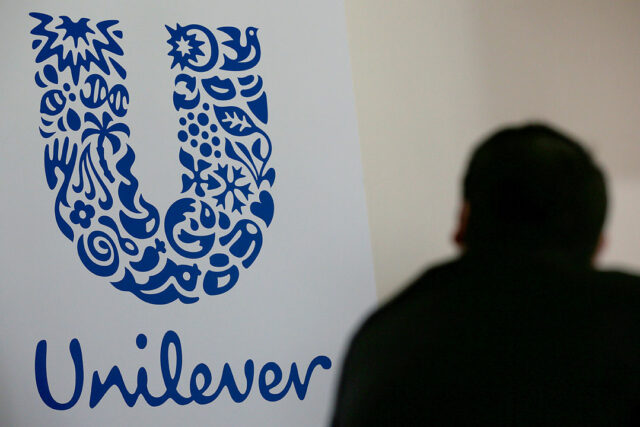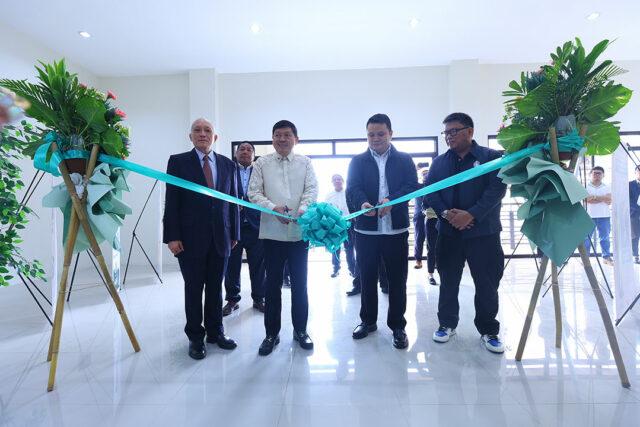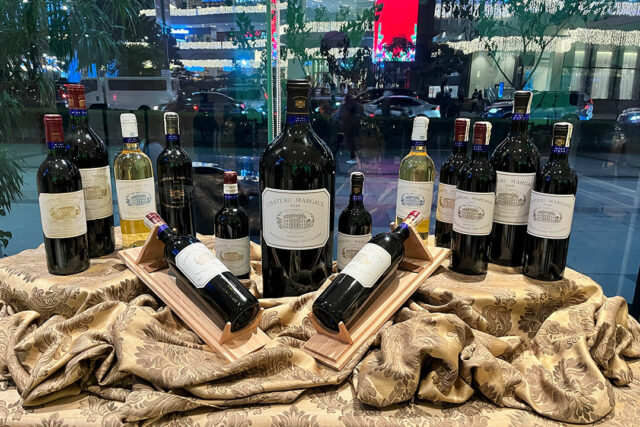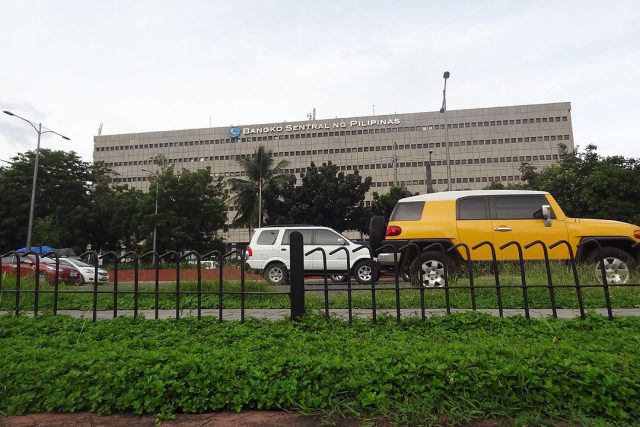CHATEAU MARGAUX holds a special place in my heart as a wine writer because it basically kicked off my wine column. In 2004, after my first visit to Chateau Margaux, I wrote my first extensive wine article on this first growth that was featured in a luxury magazine. Before that article, I would write sparsely and mostly on wine education and information. But after that one came out, I got my first offer to write a regular wine column, called “Sip by Sip,” for another newspaper. Then I moved here to BusinessWorld a bit less than a decade ago, where my column is called “By the Glass.”
Chateau Margaux is not only special because of its iconic wines, but also because of the personalities behind the chateau. I was very fortunate to be able to interview the legendary Paul Pontallier, who was the Managing Director from 1990 until his untimely passing in 2016, during that visit in 2004. And then in 2016, I got to interview the man who is the present managing director, Philippe Bascaules, who was back then working for the Inglenook Niebaum-Coppola Estate Winery of Oscar-winning director and Hollywood royalty, Francis Ford Coppola.
Amidst the craziness of our traffic this holiday season, going to BGC in Taguig from my Quezon City office can be a real nightmarish drive, but I was not attending just some random wine event, we are talking of Chateau Margaux here! I will never pass up a chance to taste Chateau Margaux, and this was made even more trip-worthy because of the presence of visiting Deputy Managing Director, Aurélien Valance.
Once more, Romy Sia and his Wine Story, the country’s only ultra-premium wine store, pulled off another wine dinner of the highest stature, with one of the most revered chateaux of all time, first growth Chateau Margaux. This dinner featured four Chateau Margaux vintages covering three decades: the highly touted 1989, the less hyped 1999 and 2004, and one of the most well-regarded vintages of the last two decades, the 2009.
AURÉLIEN VALANCE
A little background on Aurélien Valance. He fell in love with wine and Chateau Margaux when he was in business school, He started as an intern at Chateau Margaux in 2001 but was called back and hired in 2006, initially as a commercial director based in Paris. But he eventually moved to Bordeaux when Paul Pontellier passed away, and was promoted to deputy managing director, under the returning Phillipe Bascaules.
As he mentioned in his talk during the wine dinner, Aurélien would have been an investment banker if he wasn’t into wine, but he caught the wine bug early, and being at Chateau Margaux is a dream job for anyone with this much wine passion.
Aurélien was also once a blind wine tasting champion and is an enthusiastic wine collector of thousands of wines. But he did clarify that these bottles are not all Chateau Margaux.
Sherwin Lao (SL): Have things changed since the return of Philippe Bascaules to Chateau Margaux as the new managing director replacing Paul Pontallier? Whether it be from the management or winemaking point of view?
Aurélien Valance (AV): This is a good question, but I must say a few things changed. I think especially the way we do tastings and on deciding on which plots of harvest to use to make the wine blend.
You see, normally when we do tastings, Paul would often go first, and because Paul was always a legend and always renowned for his palate, everyone in the tastings would normally shy away from speaking out, even if we all know taste could be quite subjective. It is not because Paul was not listening, it is all due to Paul’s revered status.
With Philippe, I would say he is more open-minded and people around him are not intimidated to say their opinions during the tastings.
SL: While in general, Bordeaux prices, including those Grand Cru Bordeaux, have been affected by the global economic crises — COVID, Brexit, and even China’s slow down — how does Chateau Margaux still continue to command and sell at high prices?
AV: There are three reasons why Chateau Margaux has always commanded these high prices:
One: We bank on the excellence of our wines. And even in the most difficult of vintages, like, for example, the 2013, we will produce very little quantity, but still make the highest quality wine possible from this vintage;
Two: We are family owned, so we can decide on whether we want to sell or not. In fact, when the market is tough, we actually prefer to keep the wines than selling it lower than what we command. We can always keep the wines and then sell it after another 10 years or more when the market is no longer tough. The negociants we sell to know Chateau Margaux never discounts; and,
Three: We try to have a very good global distribution. Last year, we were distributed in more than 110 countries. We don’t want to depend on a single market, like you mentioned China, as we will suffer. So, we prefer to spread out our distribution. When we deal with our many negociants we have the final say in the allocation of our stocks to which markets through which importers. This way we have absolute control of where our stocks go, and we can ensure our global distribution, vintage after vintage. That is why we only use select number of negociants and we meet them at least once or twice a year as they are our partners, and we want to get details of where they sell our wines.
Like for example, here at Wine Story I know how many bottles my negociant sold to them. (Author’s note: Chateau Margaux, like most of the Bordeaux chateaux, sell to negociants, basically the middleman, who then sells to wine importers around the globe. There are close to 400 registered negociants in Bordeaux. Chateau Margaux, as Aurélien mentioned, worked with 40 negociants.)
SL: I noticed that the Cabernet Sauvignon made up like 75%-80% of the blend during the 1980s and 1990s. Then Cabernet Sauvignon’s share in the blend gradually increased throughout the 2000s, and has been closer to 90% or more now. Why is this?
AV: For two reasons:
One: We feel our Cabernet Sauvignon can produce better wines in our blend than having more Merlot. Our best terroir is in fact composed of pebbles, the soil most suitable for Cabernet Sauvignon;
Two: Bordeaux experienced big climate change. And weather is now warmer, and this actually benefited the Cabernet Sauvignon. So, the quality of our Cabernet Sauvignon has improved, as they are now riper, while our Merlot quality may have been stable, but they are not better, so it became more difficult to put more Merlot into our blend.
SL: In the last 20 years or so — basically from the 2001 vintage onwards — what would be, in your personal opinion, the top five vintages, ranking them from one to five with one being the highest – and why?
AV: (He paused before replying.) To drink now (and I nodded), for me:
No.1. The 2009 Vintage — it is so good now, and it could even be better in the future.
No. 2. The 2019 Vintage — I love this wine, as I always enjoy charming wines. The vintage is creamy and the tannins are velvety, soft and silky.
No. 3. The 2022 Vintage — to me the most impressive of the last two decades is this vintage, which should be arriving soon. This is really so good, and such a baby that it should be kept for at least 10 years before drinking. But the wine can still be appreciated in its youth now and can get even more impressive over time. I look at this wine as the modern version of our famous 1961 vintage.
No. 4. The 2004 Vintage — this to me is textbook Chateau Margaux as this is a wine with fragrance of violets, and more floral. In fact, it is a wine my Burgundy-loving friends would drink.
No. 5. The 2001 Vintage – this is my pick to drink now. I mean it is a vintage people don’t talk about as it came after the incredible 2000 vintage, [it is] always hard to come after such a vintage. At Chateau Margaux, for a long time, this 2001 has been quite shy, but just two years ago, this vintage suddenly blossomed, and it is hard even for me to explain why and how. At Chateau Margaux, I never serve the 2001 to guests, but lately this is the vintage I love to serve. The perfume is amazing, and it has a lengthy finish. Prior to its evolution two years ago, the finish of this vintage was quite tannic, but now the tannins have softened considerably and the finish is just very smooth.
Well said Aurélien!
Here below are my customary tasting notes on the four vintages of Chateau Margaux, in order of tasting:
• Chateau Margaux 2009 — “Intense nose with ripe blackcurrant, cedar, mint-chocolate, very concentrated, with so much rich flavors dancing all over the palate, cedary, full-bodied with juicy tannins, powerful, yet quite elegant, and with lengthy vivacious finish; drinking well now, but can keep for decades and decades; indeed, a wine for the ages.”
• Chateau Margaux 2004 — this is the only vintage of Chateau Margaux among the four vintages featured that I had tasted before and I shared my fond thoughts of this vintage with Aurélien during our interview: “perfumed nose of violets and red petals, with the delightful floral elements being more prominent than the fruit side, a very sophisticated wine with freshness, flintiness and suppleness that is an antithesis of the more powerful grippy wines.”
• Chateau Margaux 1999 — “still very fresh on the nose, with blueberries, plums, tobacco leaves, vanilla, cinnamon bark, velvety on the mouthfeel, friendly approachable tannins, and with nice mineral notes at the end; this was a surprise as 1999 is another vintage rarely mentioned in any Bordeaux conversation.”
• Chateau Margaux 1989 — “Luscious nose of ripe berries, cacao, cedar, and eucalyptus. For a 35-year-old wine, this wine still exudes freshness, and on the palate, the body is silky, with a balanced acid backbone and soft tannins, and ends with a lovely bitter-sweet and peppery lingering finish.”
These hedonistic Chateau Margaux wines plus their other vintages, in different size formats, are available at Wine Story Uptown BGC and Wine Story Shangri-La Mall. For more info on Wine Story, visit www.winestory.com.ph.
Sherwin A. Lao is the first Filipino wine writer member of both the Bordeaux-based Federation Internationale des Journalistes et Ecrivains du Vin et des Spiritueux (FIJEV) and the UK-based Circle of Wine Writers (CWW). For comments, inquiries, wine event coverage, wine consultancy, and other wine related concerns, e-mail the author at wineprotege@gmail.com, or check his wine training website https://thewinetrainingcamp.wordpress.com/services/.












